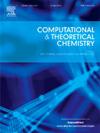Adsorption and gas-sensing performance of sulfur gases on SnS/GeSe heterojunction
IF 3
3区 化学
Q3 CHEMISTRY, PHYSICAL
引用次数: 0
Abstract
This article uses first principles calculations to study the electronic transport properties of two-dimensional materials germanium selenide (GeSe), tin sulfide (SnS), and their SnS/GeSe van der Waals heterostructures for adsorbing three sulfur gases. Through total energy calculations, we determined that H2S and SO2 tend to adsorb more readily to the vacancies on the surfaces of GeSe, SnS, and the SnS/GeSe heterojunctions, whereas SO3 shows a stronger preference for adsorbing to the top sites. By analyzing the band structure of sulfur gases after adsorption, we found that H2S adsorption has no regulatory effect on the electronic structure of monolayers and heterojunctions, but the adsorption of SO2 and SO3 can regulate the electronic structure of monolayers and heterojunctions to varying degrees. Among them, the adsorption of SO2 most significantly modulates the band structure, not only adjusting the position of energy distribution within the band structure but also inducing new energy band. Therefore, we constructed a gas sensing device based on SnS/GeSe heterojunction and focused on studying the electronic transport properties before and after SO2 adsorption. The device without gas adsorption consistently exhibit very small currents within the bias voltage range of −0.7 V to 0.7 V. However, the adsorption of SO2 notably enhances the current of the device and displays a negative differential resistance effect in both positive and negative bias region, with a peak-to-valley ratio approaching 300. Therefore, we conclude that SnS/GeSe heterojunction devices can serve as gas sensitive adsorption detection devices for SO2, which has important physical significance for further understanding the electronic transport mechanism of molecular devices.

求助全文
约1分钟内获得全文
求助全文
来源期刊

Computational and Theoretical Chemistry
CHEMISTRY, PHYSICAL-
CiteScore
4.20
自引率
10.70%
发文量
331
审稿时长
31 days
期刊介绍:
Computational and Theoretical Chemistry publishes high quality, original reports of significance in computational and theoretical chemistry including those that deal with problems of structure, properties, energetics, weak interactions, reaction mechanisms, catalysis, and reaction rates involving atoms, molecules, clusters, surfaces, and bulk matter.
 求助内容:
求助内容: 应助结果提醒方式:
应助结果提醒方式:


